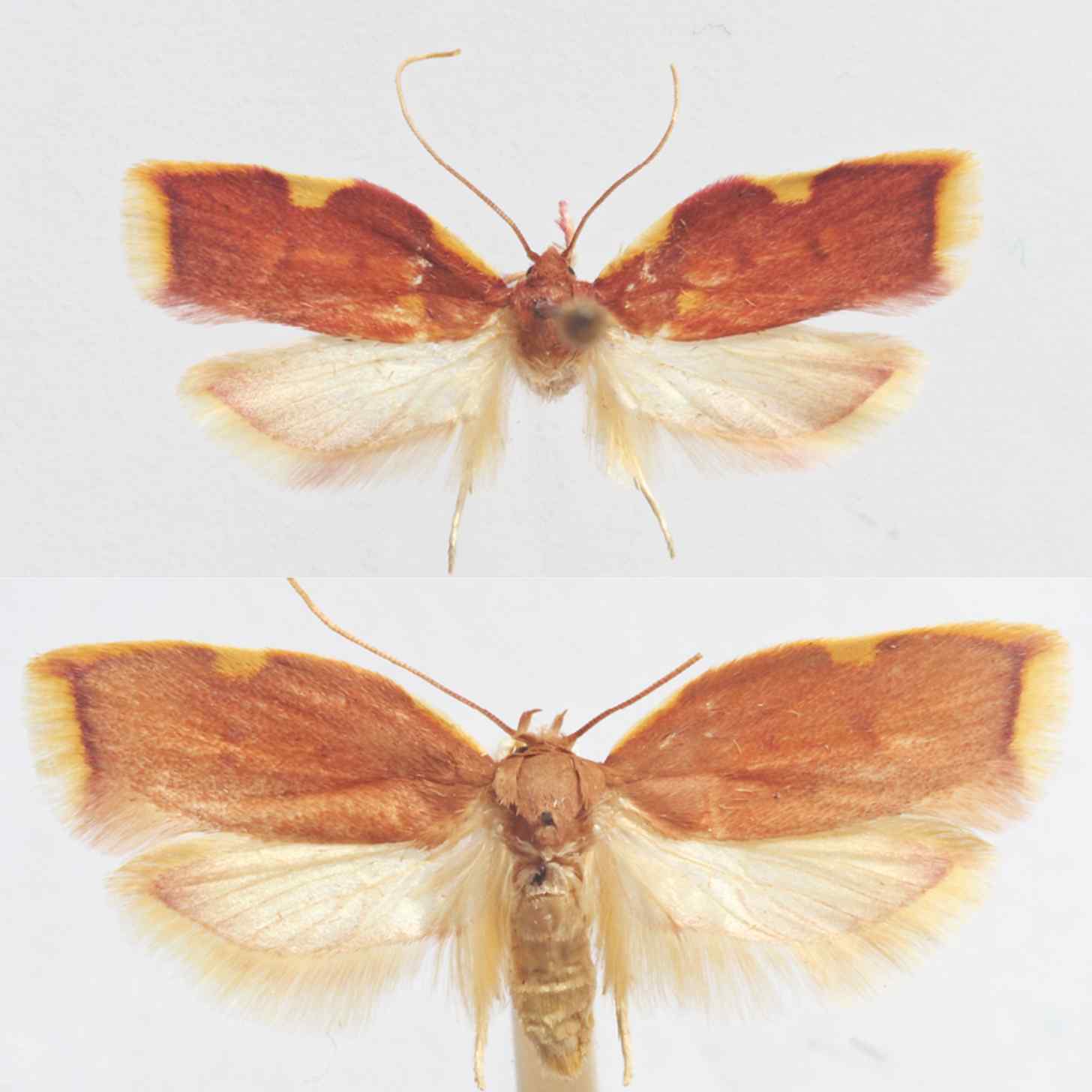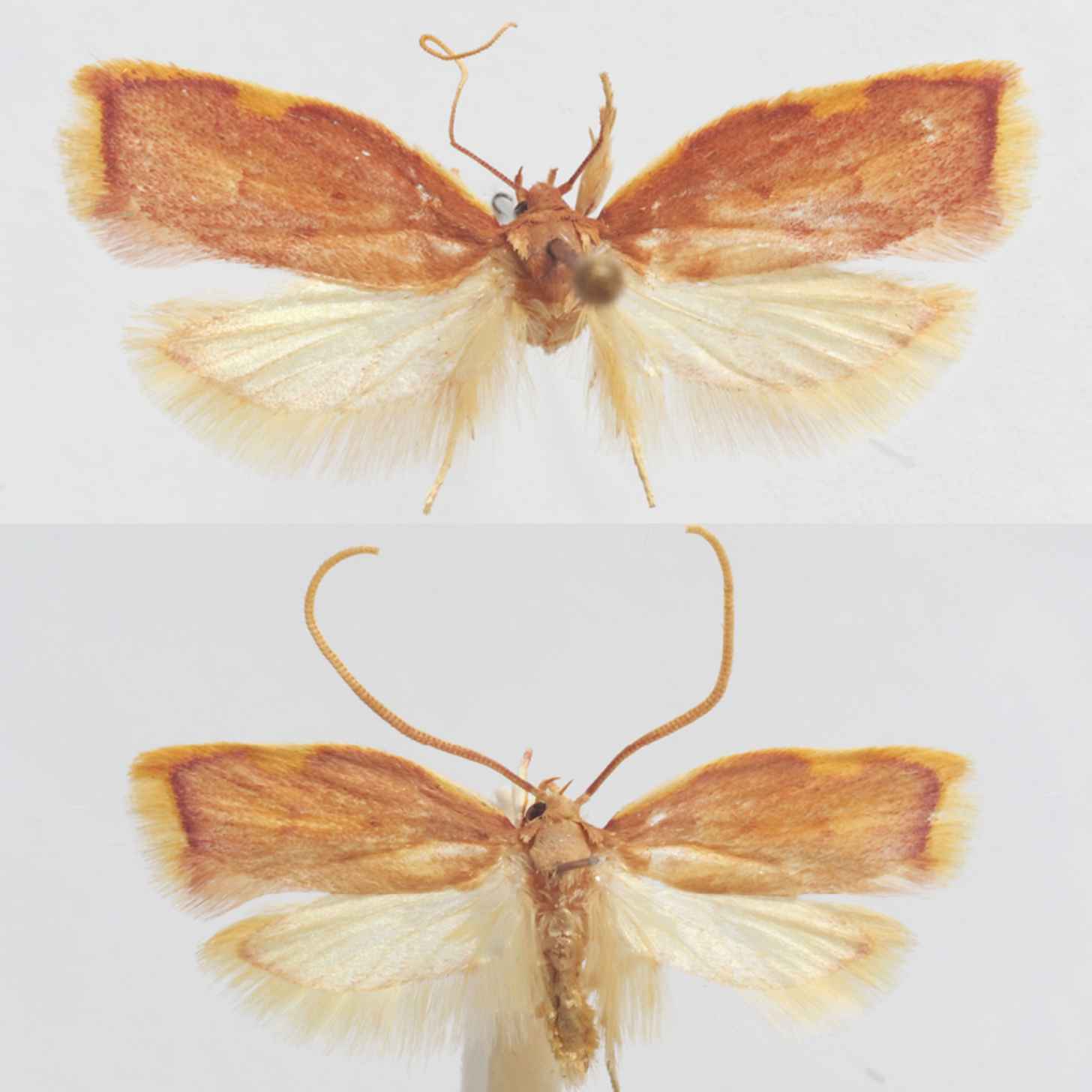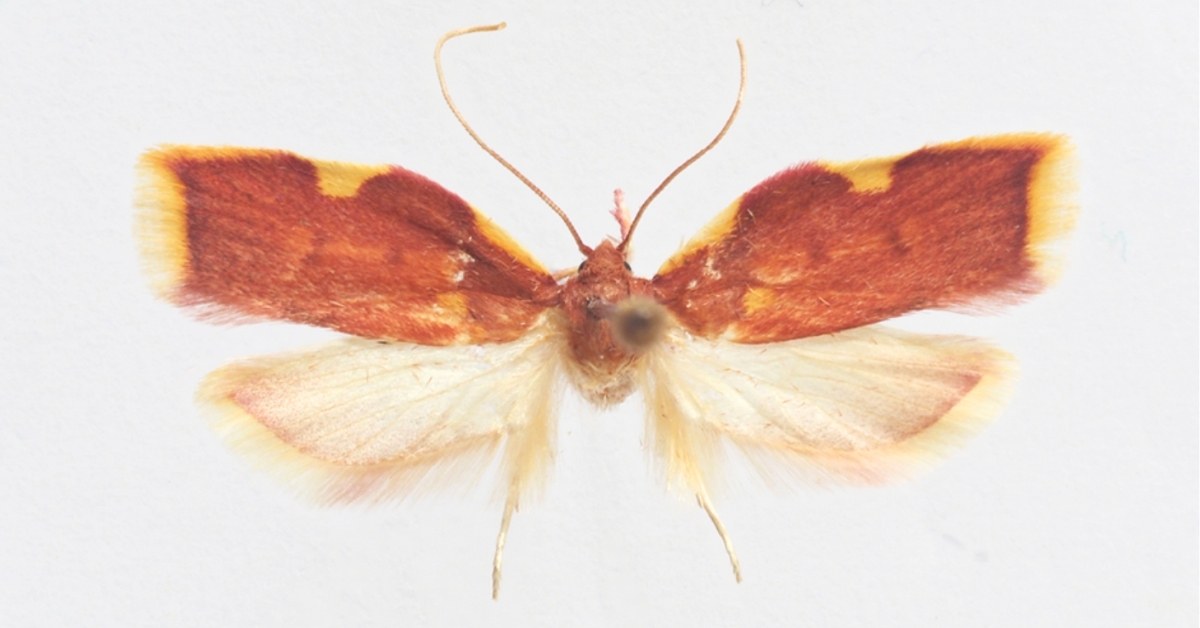On July 31, entomologist Peter Huemer put a century-long case of mistaken identity to bed.
In a study published in the scientific journal Alpine Entomology, Huemer collected and carefully studied 100 butterflies.
He found that a pink, yellow, and amber dappled moth long mischaracterized as the Carcina quercan, or widespread oak carcina moth, was actually its own distinct species.
“Carcina quercana…is one of the best known micromoths in Europe and has always been considered easy to identify due to its distinctive external features,” observed Huemer, who works at the Tyrolean State Museum Ferdinandeum in Innsbruck, Austria.
“Due to its striking appearance, it was historically described by only a few authors under different names, the last valid one about 150 years ago.”
By conducting extensive genetic surveys, Huemer confidently identified the moth as a “clearly separated new species,” which he named Carcina ingridmariae.
The discovery occurred in Northern Cyprus — a democratic republic roughly 40 miles south of Turkey that is often regarded as one of the most biologically diverse regions in the Mediterranean basin.

Huemer estimates that the Carcina ingridmariae’s population extends throughout the eastern Mediterranean, from Croatia and Greece to Cyprus and Turkey.
This is not the first time that Huemer has discovered a new species in the Mediterranean basin.
In November 2024, he helped researchers at Northern Cyprus’ Near East University identify a new type of night butterfly: Scrobipalpa chardonnayi.
“This new discovery, which sheds light on the unique biological diversity of Northern Cyprus, is an indicator of our university’s scientific capacity,” Dr. Tamer Şanlıdağ explained in an interview with Near East University.
“This international collaboration carried out by Prof. Dr. Özge Özden and Dr. Peter Huemer has once again demonstrated the impact of academic studies that transcend borders.”
Özden himself added: “This discovery, made at a time when species are rapidly disappearing, is very important for our country and world science.”
Despite their namesake, night butterflies are a common nickname for butterflies’ nocturnal relative, the moth.
Although moths are not romanticized in the same way that butterflies often are, they play an equally important role in the environment when it comes to transferring pollen and distributing nutrients.
They’re also key members of their local food webs, serving as prey for amphibians, birds, bats, and other small mammals.

Huemer is an expert when it comes to the underrated insect. In his 35-year-long career, Huemer has described more than 200 insect species, many of them moths, and contributed to over 400 scientific publications.
In a romantic turn of fate, his latest discovery also doubled as a 42nd wedding anniversary present for Huemer’s wife and frequent lab partner, Ingrid Maria.
“It is without doubt the prettiest species I have encountered in my long scientific career, even though it is still unnamed,” Huemer said in a press release.
Therefore, he said, it was “obvious” that the species should be dedicated to his wife.
“The new [species] is dedicated to my wife, Ingrid Maria, who for so many years accompanied and supported me during field work and long hours of analysis in the laboratory,” Huemer wrote in his report.
You may also like: New butterfly species wows scientists: 'This discovery reveals a lineage shaped by 40,000 years of evolutionary solitude'
Header image via Peter Huemer / Ferdinandeum



